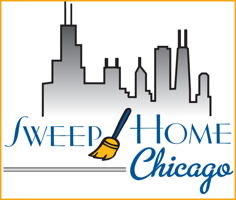Removing Allergens in the Home
 Have you ever taken a book off a shelf only to receive a nose-full of dust and an afternoon of sneezes? Do your eyes start to water at the mere mention of spring flowers and April showers?
Have you ever taken a book off a shelf only to receive a nose-full of dust and an afternoon of sneezes? Do your eyes start to water at the mere mention of spring flowers and April showers?
Fortunately, sneezes, allergies, and a runny nose aren’t inevitable, and there are several habits you can adopt to reduce the incidence of household allergies and the danger of someone with asthma having an attack.
Simple Habits to Adopt at Home
An endless number of tiny and microscopic allergens infest the average home, and a tidy cleaning schedule is usually the best way to reduce the buildup of contaminants like pet dander, pollen, and dust mites.
Medical website WebMD offers some easy steps you can take right now to “allergy-proof” your home:
- Keep windows closed
- Reduce moisture in the home
- Avoid using fans
- Consider hardwood floors rather than carpet
- Vacuum weekly if carpets are necessary
One of the biggest culprits of indoor allergens is your bedding. Dust mites and their feces create huge allergy problems for many people. In an article on reducing the incidence of allergic reactions, “The Washington Post” says that “vintage pillow equals heavy allergy symptoms.”
They also say:
If your pillow is older than three years and has not been washed during that time, it weighs more now than when you bought it. It’s loaded with dust mites that are next to your face while you sleep. The microscopic mites cause allergies in many people.
The “Post” also suggests using hypoallergenic pillows instead of down pillows and also using a zippered case for the pillow that can be washed on a weekly basis.
Tip: You can wash down-alternative pillows and re-fluff them by tossing in a few tennis balls into the dryer on a low-heat setting.
Is There Such a Thing as Too Clean?
A recent feature from CBS News offered some fascinating details on a study by researchers at Johns Hopkins University. One study suggested that inner-city kids who came into contact with insect, mouse, and pet droppings were more susceptible to developing allergies.
However, a more recent study seemed to contradict those findings when researchers found that some exposure to those allergens actually reduced the likelihood of a child developing asthma.
According to the study:
About 41 percent of allergy-free and wheeze-free children in the study grew up in homes that were rich with allergens and bacteria. By contrast, only 8 percent of children who suffered from both allergy and wheezing had been exposed to these substances in their first year of life.
Although this finding doesn’t offer anyone license to see just how dirty a home can get, the idea that a house can become “overly” clean is interesting and requires more study in the next decade. One of the researchers told CBS News:
We would not take any of this as information we could use to give advice… Please don’t get an intentional cockroach infestation in your house. There’s no reason to think that would help.
Scary Bugs Under the Bed
These days, you don’t need to worry about monsters under your bed, but you do need to worry about allergen-causing infestations of dust and pollen. Website Green America suggests that there are several creepy-crawlies that may lurk in your bedroom.
Some of those allergy-inducing bugs and contaminants include:
- Animal dander
- Cockroaches
- Dust mites
- Mold
- Pollen
Don’t forget to vacuum, dust, and clean under the bed! Your freshly vacuumed bedroom floors will quickly become infested again if you don’t remember to clean under the bed each time you vacuum the room. Also, wash everything on the bed on a regular basis and also consider washing the curtains and upholstered furniture.
Need Help Getting Rid of Allergens In Your House?
Need to rid your home of annoying allergens and sneezes? At Sweep Home Chicago, we are fully committed to providing all of our customers with the quality cleaning services you desire and deserve. Get a Free Cleaning Estimate in the Chicago area today!
